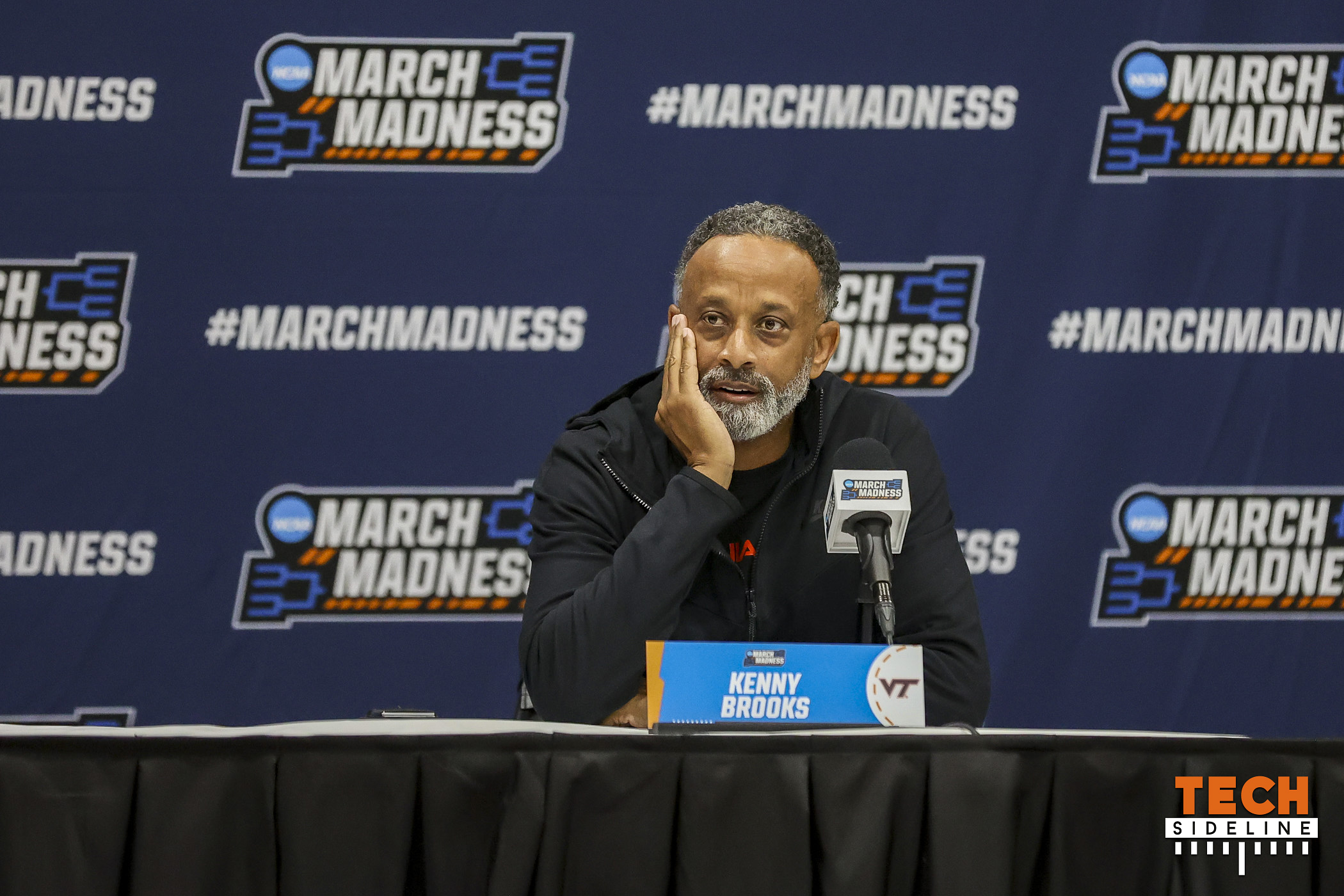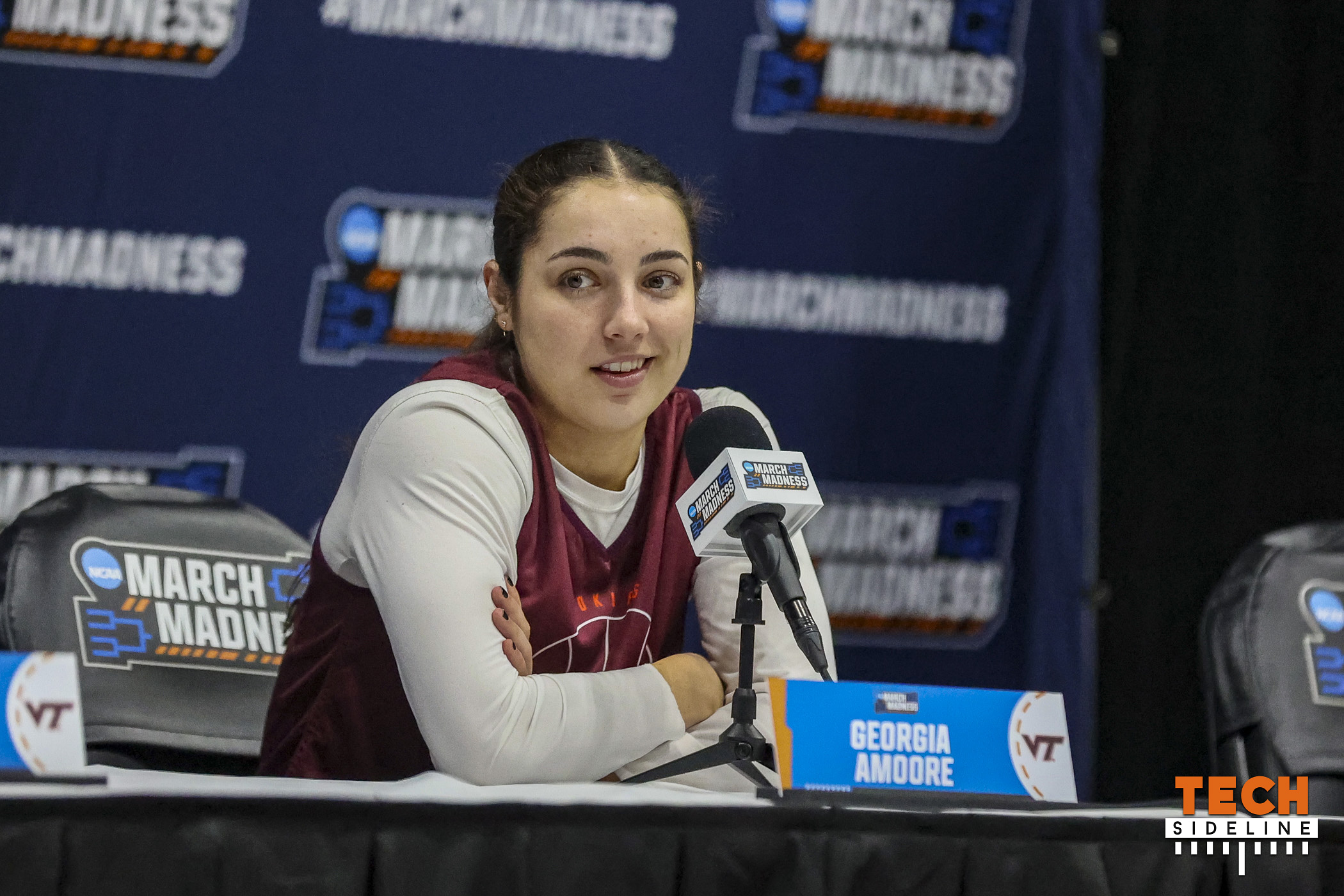
Hokies coach Kenny Brooks knew what was being asked. He didn’t have to hear the rest of the question.
“No” was his response. The context: If the style of Marshall, Virginia Tech’s first-round opponent in the NCAA Tournament, compared to anything he’d seen this year.
The Thundering Herd (26-6) won the Sun Belt regular-season championship with a 17-1 record and defeated James Madison in overtime in the conference title game to advance to the Big Dance for just the second time ever (1997). It’s led by first-year head coach Kim Caldwell, who spent seven years at D-II Glenville State and won a national championship in 2022.
She runs the Grinnell System, which is up-tempo and heavily relies on 3-pointers, full-court pressing for 40 minutes and substituting players frequently. The rules: Long-range shots — and as many as possible — are preferred over 2-pointers, but the first shot is the best one. Every player but the shooter goes for the offensive rebound, the opponent with the ball should always be double-teamed and giving up an uncontested layup is better than a shot clock violation.
With that approach — popularized by Paul Westhead at Loyola Marymount and then with the Showtime Lakers — Grinnell’s Jack Taylor scored an NCAA-record 138 points in a game in 2012.
“When we’re running in transition and playing at a fast pace, we’re at our best,” said Thundering Herd guard Abby Beeman, who averages a team-high 16.8 points per game. “Most teams … will play up-tempo, and there is a time and place where they will slow it down and call their sets if the game is not going the way they want it to. That’s not really us too much. If the game is good, bad, we stay the same. We’re going to play how we want to play, and that’s getting up and down.”
Caldwell played at Glenville State under Bunky Harkleroad, who implemented that method with the Pioneers, and was an assistant on his staff at Sacramento State from 2013-16. One of the other assistant coaches was Bill Baxter, who had a hand in shaping what Caldwell described as a “run-and-jump” defense.
Harkleroad’s Hornets twice broke Division I single-season records for 3-pointers made and attempted. For comparison, this year’s Marshall squad leads the nation in treys attempted (31.7) and is second in makes per game (10.8).

“I think that threes are daggers. And Virginia Tech, they make a lot of threes, too, so it’s going to be an interesting game,” Caldwell said. “But I think threes are a momentum changer. Even though it’s one extra point, they get everyone going, and we shoot a lot of them. And when we are on, we are usually on. … I think it’s just kind of a unique style of play where you’re going to have volume shots.”
The frenetic pace starts on the defensive end. Marshall presses after makes and misses, a big difference from some of the very good teams the Hokies (24-7) have seen over the last 12 months that extend their defense the full 94 feet like Ohio State (last year’s Elite Eight) and Duke.
Caldwell said her team plays with a sense of urgency and a mentality that it needs the ball back for 40 minutes. It also helps that they make hockey-esque line changes and sub out their entire five at once, always keeping fresh legs on the floor.
“They’re committed to the pressure on a make, but the unorthodox part is they’re really committed to it on a miss,” Brooks said. “They’re going to run around, they’re small in stature in height, but they’re very persistent and they really come after you. They’re very physical. They allow themselves to be physical because they play 10, 12, 13 people. So if they get in foul trouble with one certain area, it doesn’t matter.
“We’re watching the game and 1:30 into the game they had five new kids coming in. So that’s something that we’ve had to prep for too. We’re going to need the kids to really be able to communicate on the floor, not only through the pressure, through the press and whatnot, but also matchups. Because we’re not going to be able to use our whiteboard and say, ‘Hey, you have number such and such, you have number such and such.’ They’re going to have to really do it themselves.”
The Herd’s 95-92 overtime victory over James Madison in the Sun Belt Tournament final is a great example of how the system works. It might not make sense looking at the box score — Brooks joked that it looked like calculus — but it’s successful. It took 99 shots (making 30), 46 of which were from behind the arc (and eight made), and 38 free throws (27 makes). Moreover, there were a combined 109 rebounds — 59 for the Dukes, 50 for the Herd — and 53 fouls.
The biggest note: JMU committed 39 turnovers.
“I don’t know how you go and you force 39 turnovers but … it takes overtime to win,” Brooks said. “I don’t know how you get 33 offensive rebounds. I don’t know how you get 99 shots in a game. … That’s the most unorthodox box score I’ve ever seen in my life.

“But that’s the way that they play. So you can’t sit there and say, ‘Hey, they’re just defense and you got to worry about defense, defense, defense.’ … We’ve had to focus on a lot of different things, different parts of the week and, but the 3-point shooting is something we’re concerned about.”
The Hokies are going to need everyone to play well. They’ll be without All-American center Elizabeth Kitley, as Brooks announced on Thursday morning, meaning they’ll heavily rely on fellow All-American point guard Georgia Amoore — but she’ll need help, especially breaking the press.
Brooks said it’s a misconception that it’ll be all on Amoore’s shoulders; rather, it’s an all-hands-on-deck situation. Tech’s even put additional players on the floor during practice to try and simulate some of the chaos they expect at 3:30 p.m. ET on Friday (ESPN2).
“Just really locking in and understanding the scout and knowing what their personnel brings because they kind of go five in, five out really quick, lots of subs,” Tech forward Olivia Summiel said. “… We just have to focus on us and make sure that despite how disruptive they make it, just try to stay poised and stay together.”
The Hokies will have quite the size advantage — they’ve got four players 6-foot-2 or taller while Marshall has no one above 6-foot-1. However, they’ll have to contain the Herd’s athleticism — Beeman is one of three double-digit scorers shorter than 5-foot-8 — and be smart with the basketball.
Playing in front of the sold-out crowd in Cassell Coliseum should help. Tech has the fourth-longest home winning streak in the country at 25 games and outscored opponents by 401 in Blacksburg this year — an average of 26.7 points per game across 15 contests. The environment should provide a nice level of comfort for the Hokies, while the Herd’s largest-attended game of the season featured 3,024 people (vs. Louisiana, Feb. 7).
“There’s no atmosphere like it,” Summiel said of Cassell Coliseum. “Hopefully it will spark up some nerves for our opponents because it’s just such an incredible environment to be a part of. And luckily, we’ve been able to play in front of some crowds of that magnitude throughout the season, whether it’s here or at other arenas throughout the ACC.
“I think that’s definitely something that we’re looking forward to hopefully capitalizing on and using the energy that’s sparked from what’s around us.”





 Print
Print







Let the miracle run begin! Confident role playing and shots from everybody!